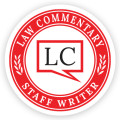The Supreme Court unanimously ruled Thursday to ease the standard of proof required for students with disabilities who seek to enforce their rights under the Americans with Disabilities Act (ADA) and related federal laws designed to guarantee appropriate education.
Chief Justice John Roberts authored the opinion, emphasizing that while the decision specifically addressed a narrow legal issue, its impact is significant for numerous children with disabilities. Roberts underscored that disabled students should not face a tougher standard of proof compared to other discrimination claimants, noting the already substantial daily challenges these children confront.
The ruling arose from the case involving Ava Tharpe, a teenager with a severe form of epilepsy. Tharpe, initially accommodated by a modified afternoon schedule at her Kentucky school, faced difficulties when her family relocated to Minnesota. Her new school in the Osseo Area School District refused similar accommodations, effectively limiting her instruction to about two-thirds of the time given to her peers.
After prolonged legal proceedings, the Osseo school district eventually conceded, but the Eighth Circuit Court of Appeals rejected the family's request for compensatory damages. The appellate court previously ruled that the Tharpe family had failed to prove the school acted with "bad faith" or "gross misjudgment," a stringent requirement.
The Supreme Court overturned this ruling, finding the lower court's reasoning incorrect. While the justices unanimously agreed to eliminate the stringent "bad faith" standard, they did not specify a new standard. Chief Justice Roberts' opinion, however, indicated strongly that Congress clearly intended robust protections linked to federal funding.
Aaron Tharpe, Ava’s father, expressed satisfaction with the ruling's broader significance. He emphasized that their legal battle was not only for Ava but also aimed to empower other families lacking sufficient resources. Tharpe highlighted the decision as providing essential tools for parents to advocate effectively for their children's educational rights.
Despite the unanimous decision, concurring opinions hinted at ongoing debate. Justice Clarence Thomas, supported by Justice Brett Kavanaugh, signaled openness to future limits on school liability. Conversely, Justice Sonia Sotomayor, joined by Justice Ketanji Brown Jackson, reinforced that existing law explicitly covers failures to accommodate, irrespective of any intent or animosity toward individuals with disabilities.
The Osseo Area Schools acknowledged the ruling, noting the Court's elimination of the "bad faith" requirement but pointed out that the justices had not yet clarified a definitive new standard. Nonetheless, the decision clearly aligns with Congressional intent to ensure comprehensive protections for disabled students.






